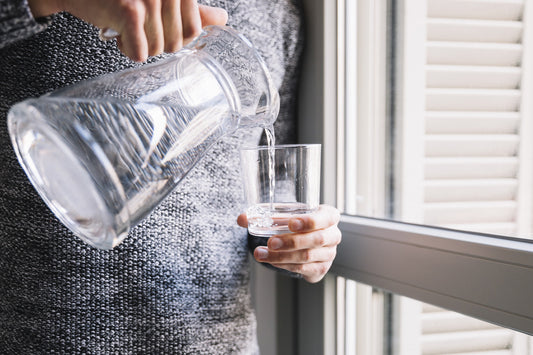Clean, safe water isn't just a luxury—it's essential for your family's health. Yet millions of households unknowingly drink contaminated water because they've forgotten one crucial maintenance task: replacing their water filters on schedule.
An overused filter doesn't just reduce water quality—it becomes a breeding ground for dangerous bacteria and allows harmful contaminants to flow directly into your drinking water. The health risks are real, but they're completely preventable when you know what to look for.
The Hidden Dangers of Overused Water Filters
Bacterial Growth and Biofilm Formation
When water filters exceed their lifespan, trapped contaminants create the perfect environment for bacterial growth. E. coli, salmonella, and other harmful microorganisms can multiply rapidly within clogged filter media, actually making your "filtered" water more dangerous than unfiltered tap water.
Heavy Metal Accumulation
Saturated carbon filters lose their ability to remove heavy metals like lead, mercury, and arsenic. These toxins accumulate in your system over time, potentially causing neurological problems, kidney damage, and developmental issues in children.
Chemical Breakthrough
Old filters allow chlorine, pesticides, and industrial chemicals to pass through unfiltered. Long-term exposure to these substances has been linked to increased cancer risk and hormonal disruption.

Image by goffkein
How to Tell If Your Water Filter Needs Replacing: 5 Warning Signs
1. Strange Taste or Odor
Your water tastes metallic, chlorinated, or musty? This is often the first sign your filter can no longer remove contaminants effectively.
2. Reduced Water Flow
Clogged filters restrict water flow significantly. If your faucet pressure has dropped noticeably, your filter is likely overloaded with debris.
3. Cloudy or Discolored Water
Visible particles or discoloration indicate your filter has reached capacity and can no longer trap sediment and contaminants.
4. Exceeded Time Limits
Most residential filters need replacement every 3-6 months, while RV filters may require more frequent changes due to variable water sources.
5. Increased Appliance Problems
Coffee makers, ice machines, and dishwashers showing mineral buildup or frequent breakdowns often signal filter failure.
Water Filter Replacement Schedule by Type
Standard Carbon Filters
- Replacement Frequency: Every 3-6 months
- High-Usage Households: Every 2-3 months
- Signs to Watch: Chlorine taste returns, slower flow rate
Reverse Osmosis Systems
- Pre-filters: Every 6-12 months
- RO Membrane: Every 2-3 years
- Post-filters: Every 12 months
RV and Motorhome Systems
- Inline Filters: Every 3-4 months or 500 gallons
- Tank Filters: Monthly inspection, replace as needed
- Sediment Filters: Every 30-60 days depending on water source
For reliable replacement options, explore our complete selection of home filter cartridges designed for consistent performance.

Image by Antares_NS
The True Cost of Delayed Replacement
Health Impact Costs
Emergency room visits for waterborne illnesses can cost thousands of dollars. Preventive filter replacement costs under $50 every few months—a small price for peace of mind.
Appliance Damage Prevention
Clean filtered water extends appliance lifespan by preventing mineral buildup and corrosion. A $30 filter replacement can prevent hundreds in appliance repairs.
Long-term Savings Analysis
- Annual filter costs: $100-200
- Potential medical bills from contaminated water: $2,000-10,000+
- Appliance replacement due to poor water quality: $1,500-5,000
Step-by-Step Filter Replacement Process
For Standard Under-Sink Systems:
- Turn off water supply to the filter system
- Release pressure by running the filtered water tap
- Remove old cartridge using the provided wrench
- Clean housing with mild soap solution
- Install new cartridge hand-tight plus 3/4 turn
- Restore water supply and check for leaks
- Flush system for 5 minutes before drinking
For RV Systems:
RV water systems require special attention due to varying water sources. Our RV filter replacement cartridges are specifically designed for mobile applications and frequent water source changes.
People Also Ask: Quick Answers
How often should I replace my water filter? Most residential filters need replacement every 3-6 months, but high-usage households or poor water quality may require more frequent changes every 2-3 months.
Can I clean my water filter instead of replacing it? While some pre-filters can be rinsed, most filter cartridges are designed for single use. Cleaning rarely restores full effectiveness and may damage the filter media.
What happens if I don't replace my water filter on time? Overused filters can harbor dangerous bacteria, allow contaminants to pass through, and even make your water quality worse than unfiltered tap water.
How do I know which replacement filter to buy? Check your current filter housing for model numbers, or measure the filter dimensions. Most systems use standard sizes, but verify compatibility before purchasing.
Protect Your Family's Health Today
Water filter replacement isn't just maintenance—it's health insurance for your family. Don't wait for warning signs that put your loved ones at risk. Create a replacement schedule, mark your calendar, and invest in quality filters designed for your specific system.
Remember: the cost of prevention is always less than the cost of treatment. Your family's health depends on the simple act of changing a filter on time.





